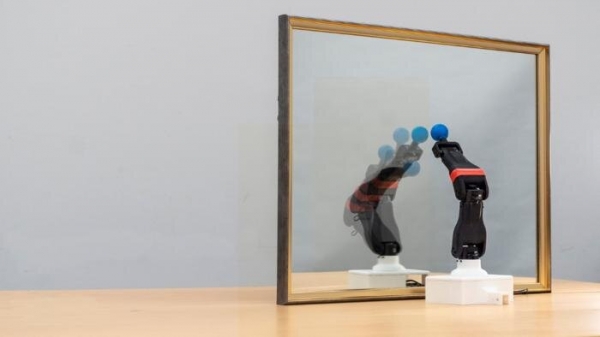By observing their own motions, robots can learn how to overcome damage to their bodies, which could make them more adaptable for a wide variety of applications.
By watching their own motions with a camera, robots can teach themselves about the structure of their own bodies and how they move, a new study from researchers at Columbia Engineering now reveals. Equipped with this knowledge, the robots could not only plan their own actions, but also overcome damage to their bodies.
"Like humans learning to dance by watching their mirror reflection, robots now use raw video to build kinematic self-awareness," says study lead author Yuhang Hu, a doctoral student at the Creative Machines Lab at Columbia University, directed by Hod Lipson, James and Sally Scapa Professor of Innovation and chair of the Department of Mechanical Engineering. "Our goal is a robot that understands its own body, adapts to damage, and learns new skills without constant human programming."
Most robots first learn to move in simulations. Once a robot can move in these virtual environments, it is released into the physical world where it can continue to learn. “The better and more realistic the simulator, the easier it is for the robot to make the leap from simulation into reality,” explains Lipson.
Read more at Columbia University School of Engineering and Applied Science
Image: A robot observes its reflection in a mirror, learning its own morphology and kinematics for autonomous self-simulation. The process highlights the intersection of vision-based learning and robotics, where the robot refines its movements and predicts its spatial motion through self-observation. (Credit: Jane Nisselson/Columbia Engineering)
Sci/Tech Top Stories
